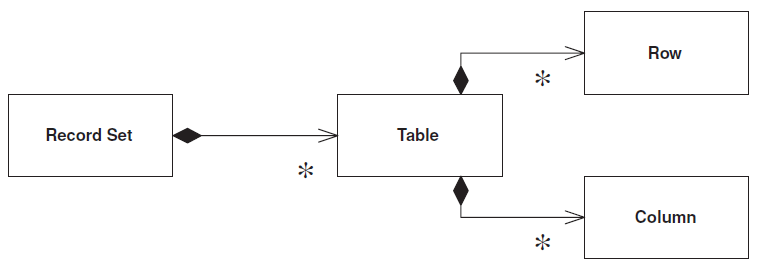Compilation of sample code from the book Patterns of Enterprise Application Architecture by Martin Fowler.
I used and created this repo when I studied the book. Super worth reading it!
Read the book and learn more on each topic.
Enjoy! :)
- Presentation
- Domain Logic
- Data Source
- Transaction Script
- Domain Model
- Table Module
- Service Layer
- Table Data Gateway
- Row Data Gateway
- Active Records
- Data Mapper
Object-Relational Behavior Patterns
- Unit of Work
- Identify Map
- Lazy Load
Object-Relational Structural Patterns
- Identity Field
- Foreign Key Mapping
- Association Table Mapping
- Dependent Mapping
- Embedded Value
- Serialized LOB
- Single Table Inheritance
- Class Table Inheritance
- Concrete Table Inheritance
- Inheritance Mappers
Object-Relational Metadata Mapping Patterns
- Metadata Mapping
- Query Object
- Repository
- Model View Controller
- Page Controller
- Front Controller
- Template View
- Transform View
- Two Step View
- Application Controller
- Remote Facade
- Data Transfer Object
- Optimistic Offline Lock
- Pessimistic Offline Lock
- Coarse-Grained Lock
- Implicit Lock
- Client Session State
- Server Session State
- Database Session State
- Gateway
- Mapper
- Layer Supertype
- Separated Interface
- Registry
- Value Object
- Money
- Special Case
- Plugin
- Service Stub
- Record Set
Domain Logic Patterns
-
Transaction Script
Organizes business logic by procedures where each procedure handles a single request from the presentation.

-
Domain Model
An object model of the domain that incorporates both behavior and data.
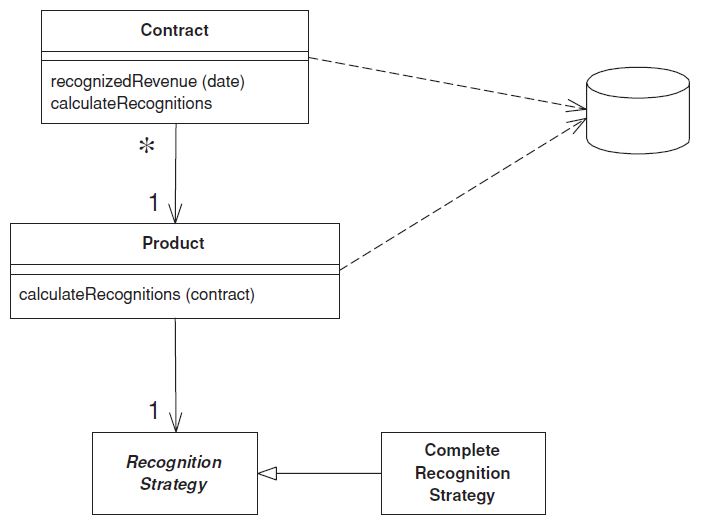
-
Table Module
A single instance that handles the business logic for all rows in a database table or view.
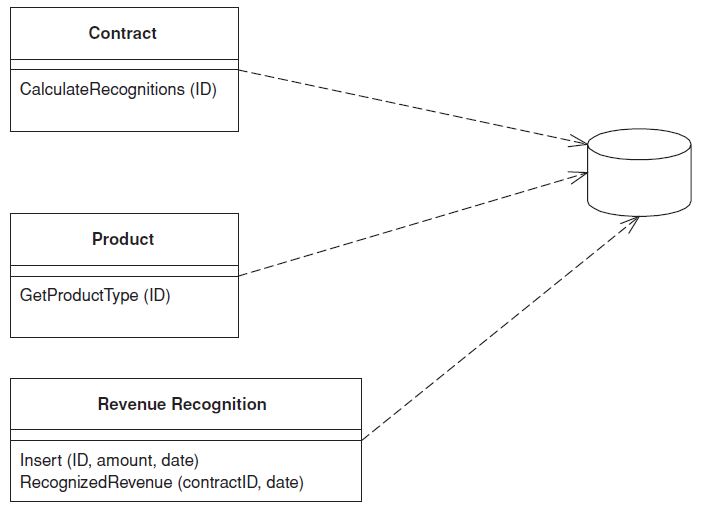
-
Service Layer
Defines an application’s boundary with a layer of services that establishes a set of available operations and coordinates the application’s response in each operation.
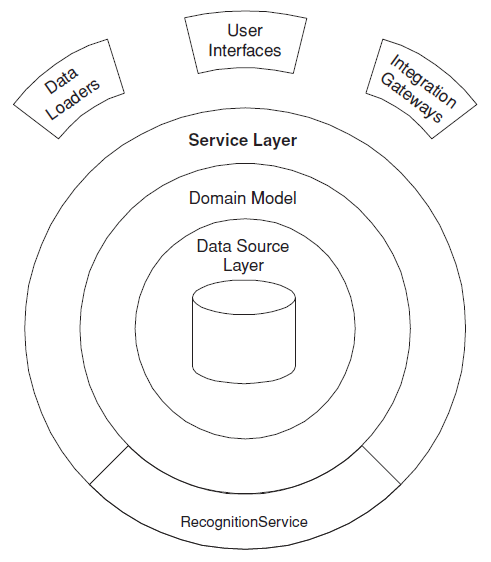
Data Source Patterns
-
Table Data Gateway
An object that acts as a Gateway to a database table. One instance handles all the rows in the table.
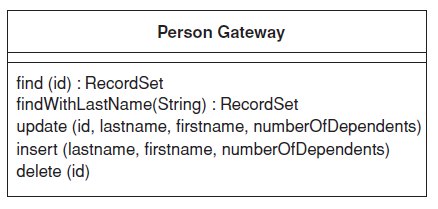
-
Row Data Gateway
An object that acts as a Gateway to a single record in a data source. There is one instance per row.
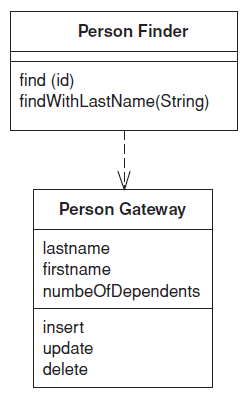
-
Active Records
An object that wraps a row in a database table or view, encapsulates the database access, and adds domain logic on that data.
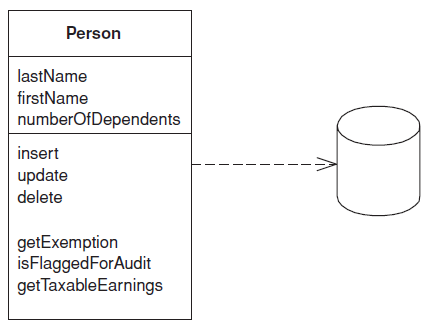
-
Data Mapper
A layer of Mappers (473) that moves data between objects and a database while keeping them independent of each other and the mapper itself.

Object-Relational Behavior Patterns
-
Unit of Work
Maintains a list of objects affected by a business transaction and coordinates the writing out of changes and the resolution of concurrency problems.
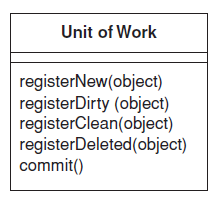
-
Identify Map
Ensures that each object gets loaded only once by keeping every loaded object in a map. Looks up objects using the map when referring to them.
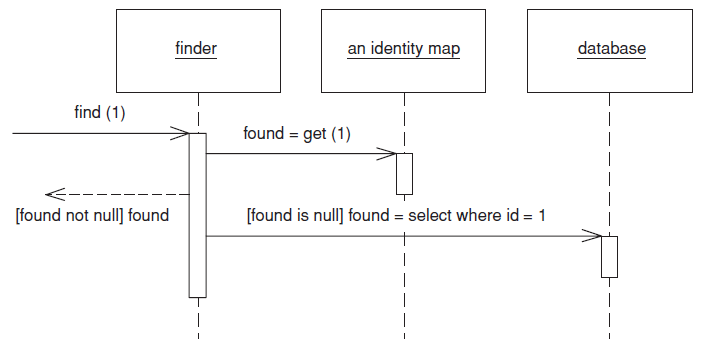
-
Lazy Load
An object that doesn't contain all of the data you need but knows how to get it.

- Types:
- Lazy Initialization
- Virtual Proxy
- Value Holder
- Ghost
- Types:
Object-Relational Structural Patterns
-
Identity Field
Saves a database ID field in an object to maintain identity between an in-memory object and a database row.
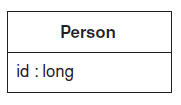
- Types:
- Integral
- Key Table
- Compound Key
- Types:
-
Foreign Key Mapping
Maps an association between objects to a foreign key reference between tables.
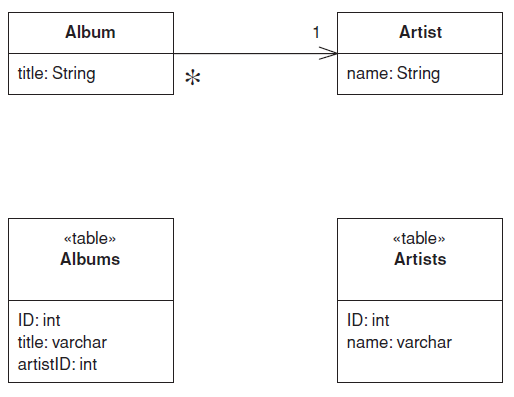
- Types:
- Single-Valued Reference
- Multi Table Find
- Collection of References
- Types:
-
Association Table Mapping
Saves an association as a table with foreign keys to the tables that are linked by the association.
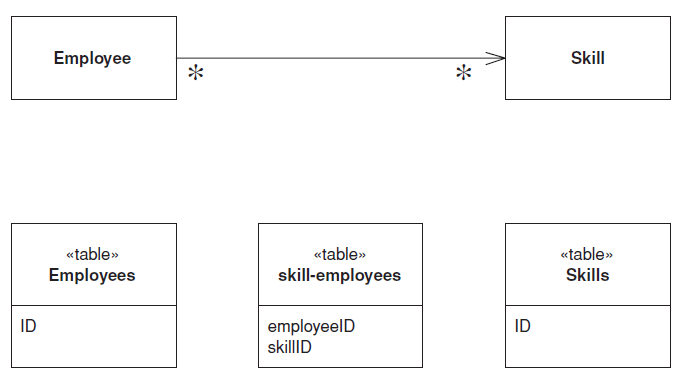
-
Dependent Mapping
Has one class perform the database mapping for a child class.
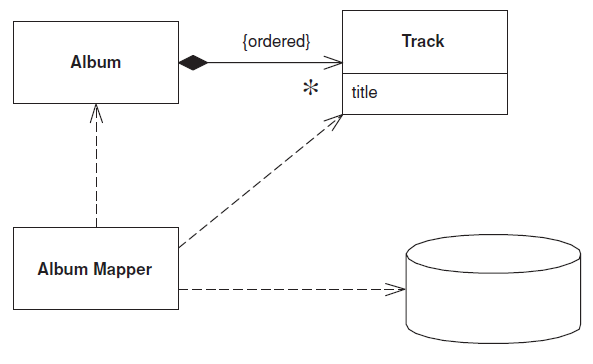
-
Embedded Value
Maps an object into several fields of another object’s table.
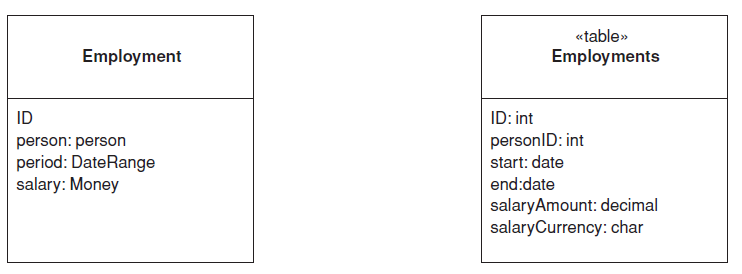
-
Serialized LOB
Saves a graph of objects by serializing them into a single large object (LOB), which it stores in a database field.
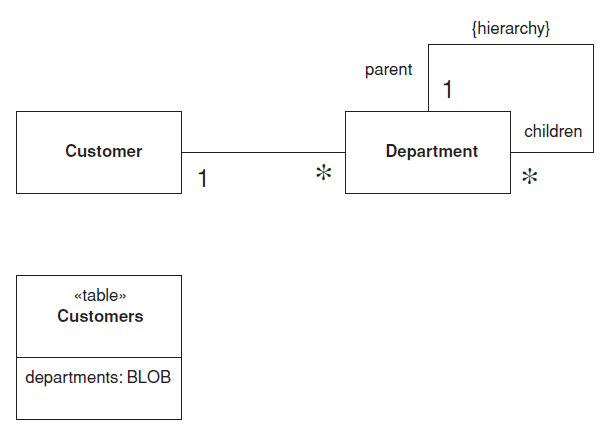
-
Single Table Inheritance
Represents an inheritance hierarchy of classes as a single table that has columns for all the fields of the various classes.
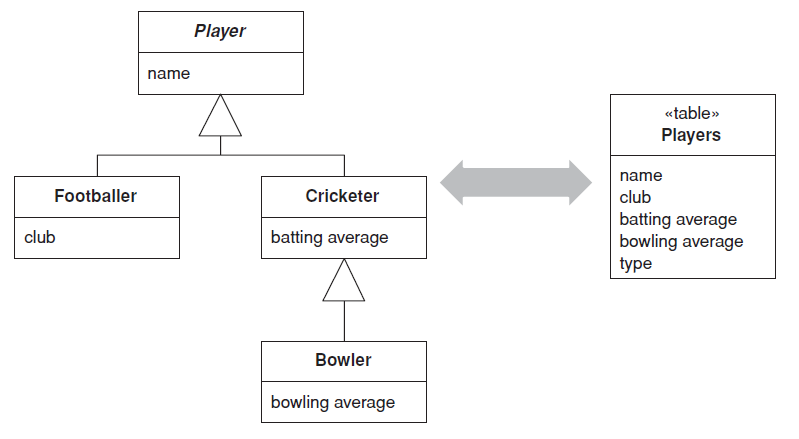
-
Class Table Inheritance
Represents an inheritance hierarchy of classes with one table for each class.
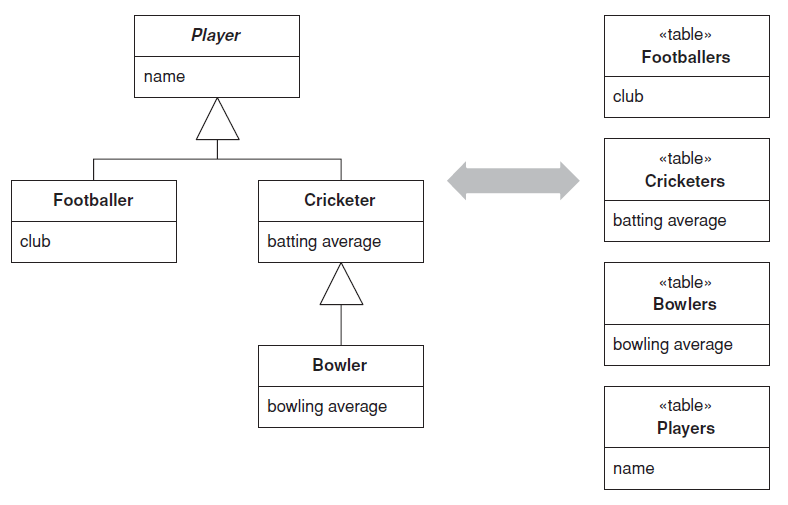
-
Concrete Table Inheritance
Represents an inheritance hierarchy of classes with one table per concrete class in the hierarchy.
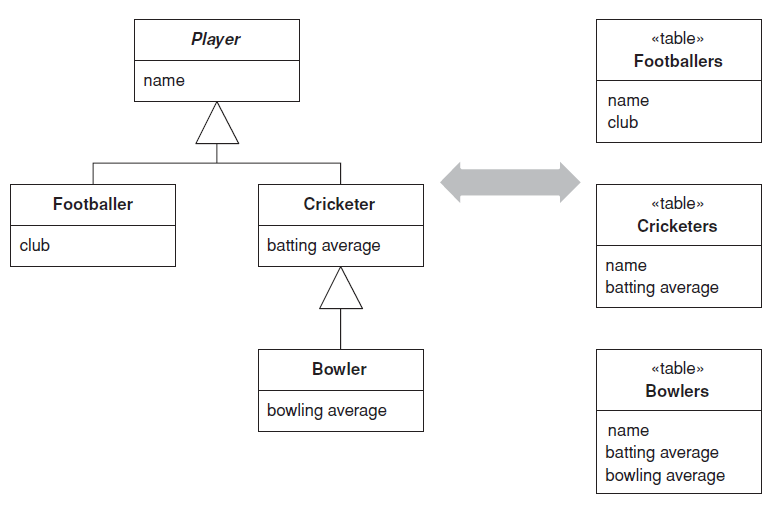
-
Inheritance Mappers
A structure to organize database mappers that handle inheritance hierarchies.
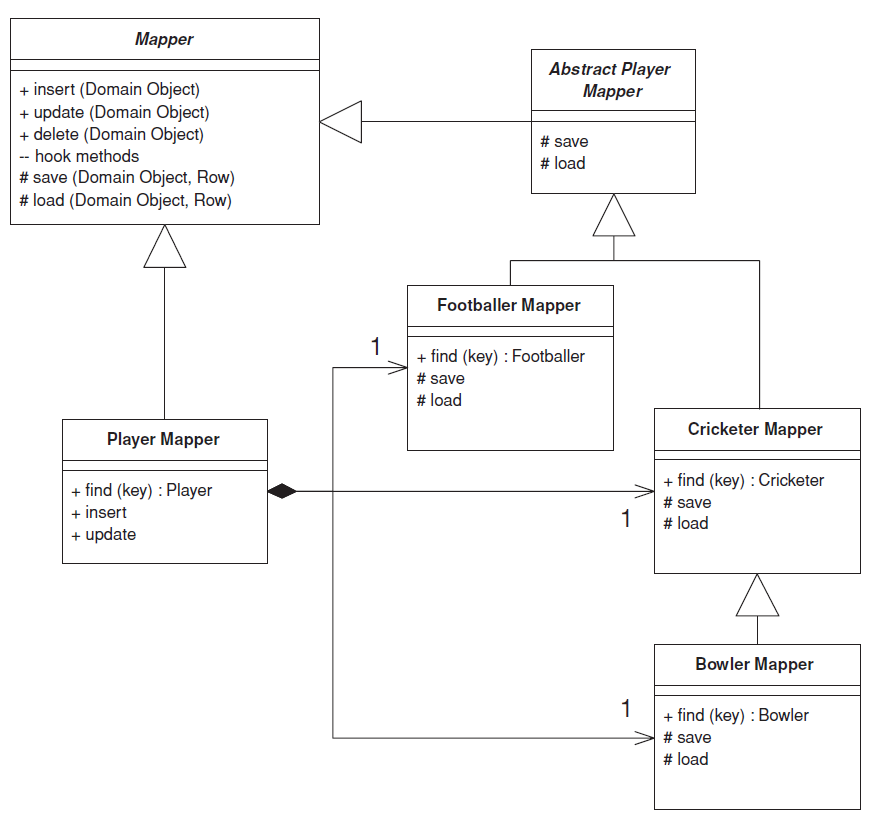
Object-Relational Metadata Mapping Patterns
-
Metadata Mapping
Holds details of object-relational mapping in metadata.

-
Query Object
An object that represents a database query.
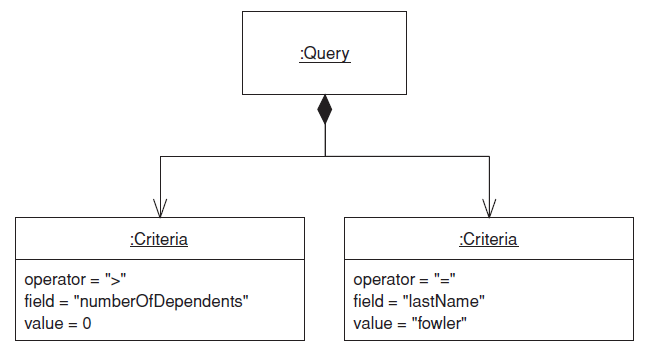
-
Repository
Mediates between the domain and data mapping layers using a collection-like interface for accessing domain objects.
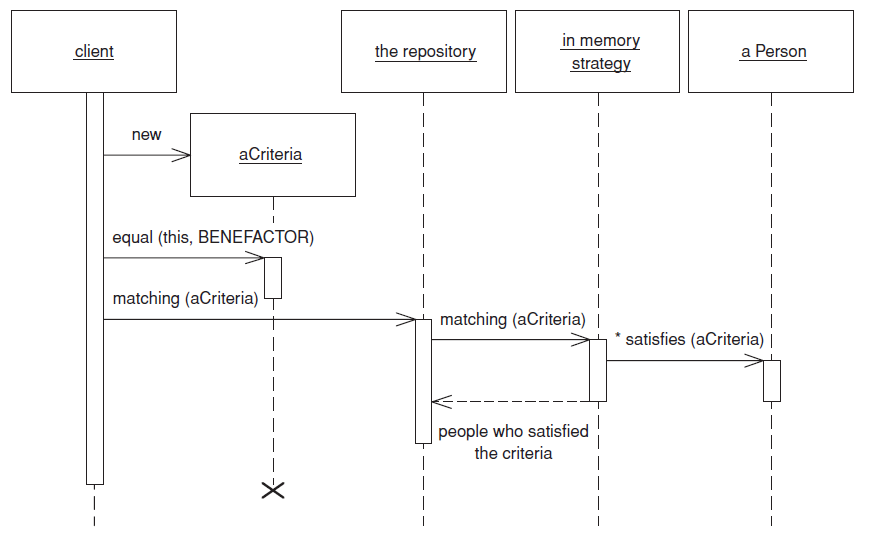
Web Presentation Patterns
-
Model View Controller
Splits user interface interaction into three distinct roles.
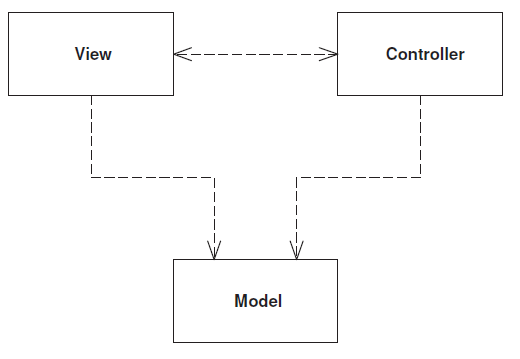
-
Page Controller
An object that handles a request for a specific page or action on a Web site.
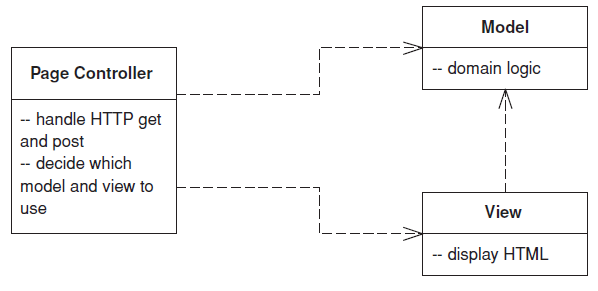
-
Front Controller
A controller that handles all requests for a Web site.
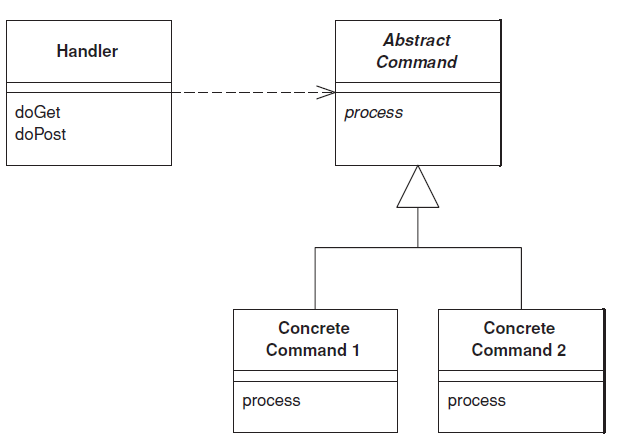
-
Template View
Renders information into HTML by embedding markers in an HTML page.
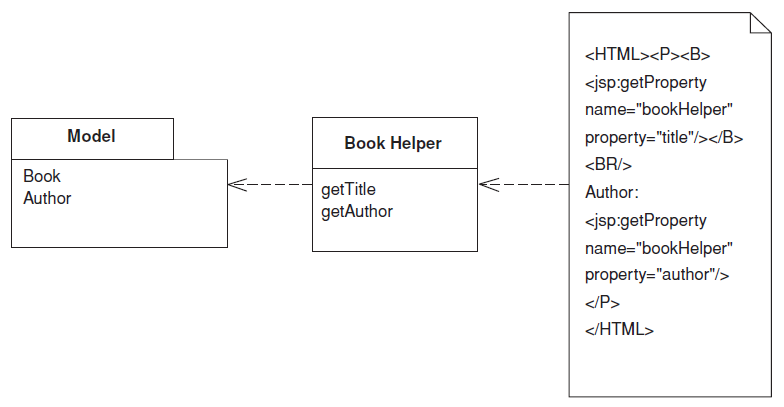
-
Transform View
A view that processes domain data element by element and transforms it into HTML.

-
Two Step View
Turns domain data into HTML in two steps: first by forming some kind of logical page, then rendering the logical page into HTML.
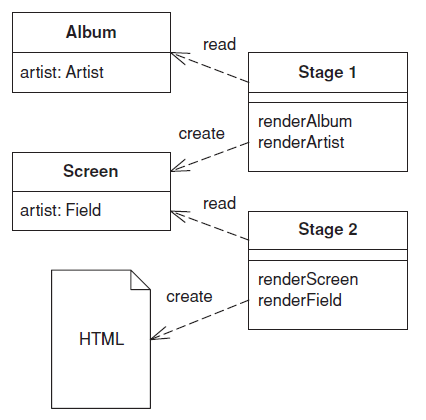
-
Application Controller
A centralized point for handling screen navigation and the flow of an application.
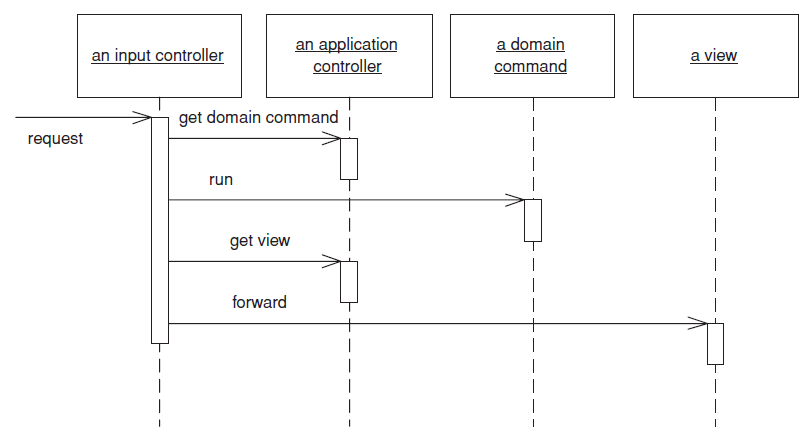
Distribution Patterns
-
Remote Facade
Provides a coarse-grained facade on fine-grained objects to improve efficiency over a network.
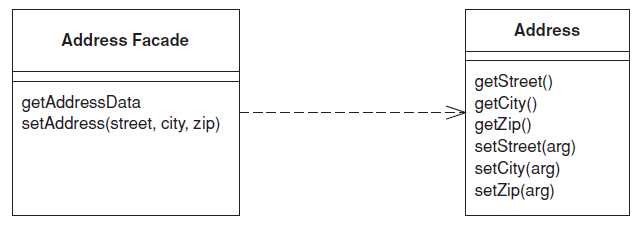
-
Data Transfer Object
An object that carries data between processes in order to reduce the number of method calls.
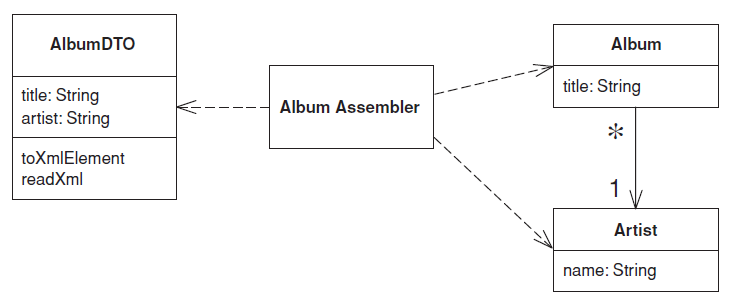
Offline Concurrency Patterns
-
Optimistic Offline Lock
Prevents conflicts between concurrent business transactions by detecting a conflict and rolling back the transaction.
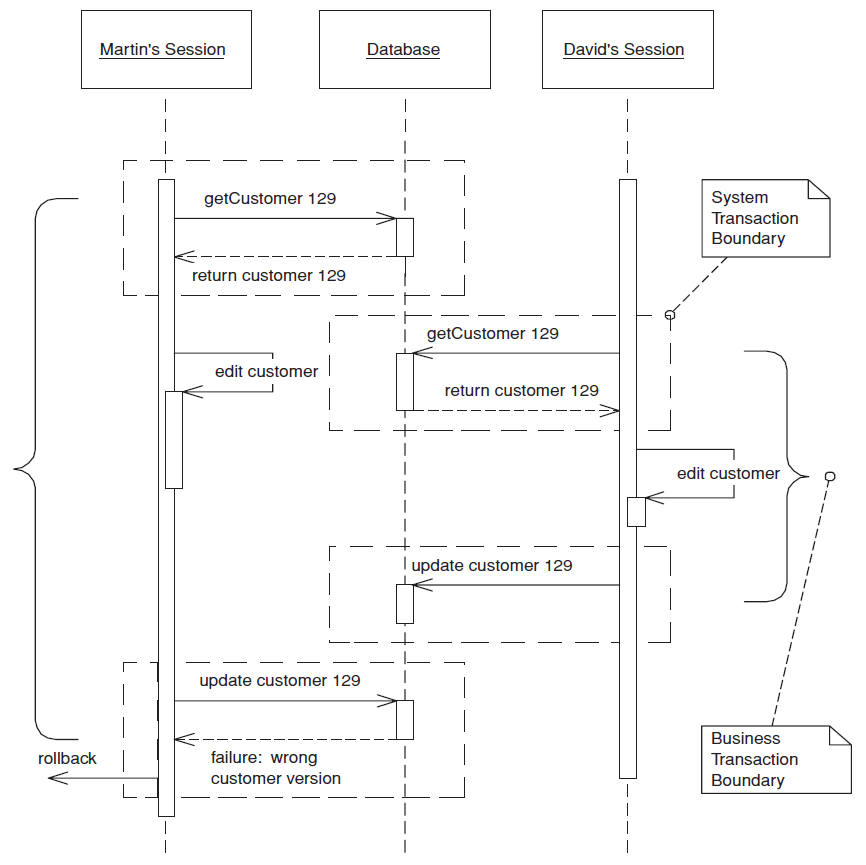
-
Pessimistic Offline Lock
Prevents conflicts between concurrent business transactions by allowing only one business transaction at a time to access data.
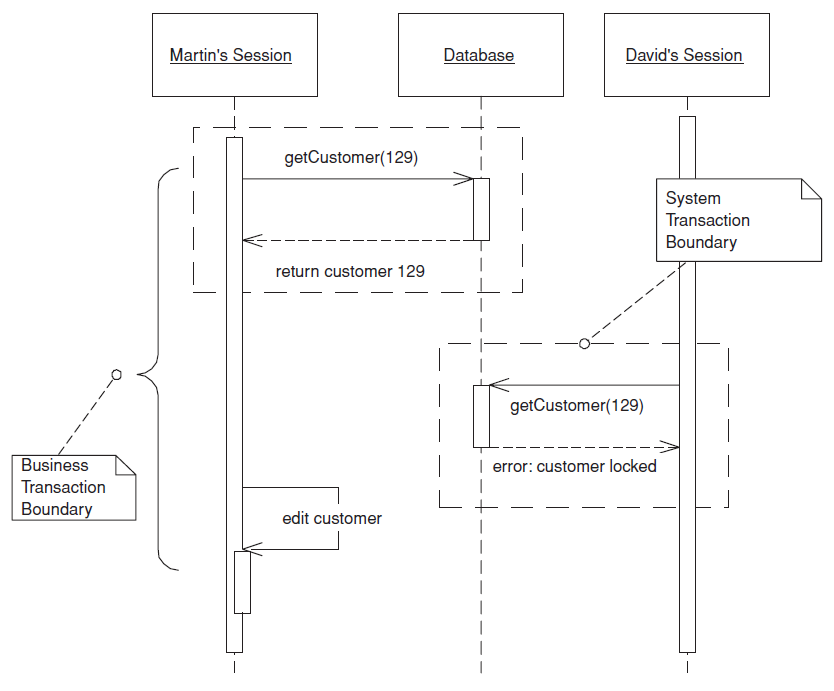
-
Coarse-Grained Lock
Locks a set of related objects with a single lock.
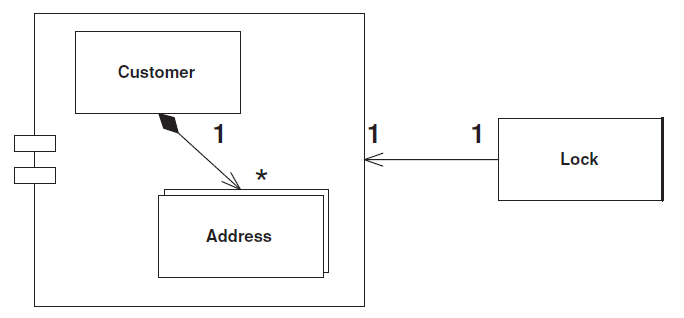
-
Implicit Lock
Allows framework or layer supertype code to acquire offline locks.
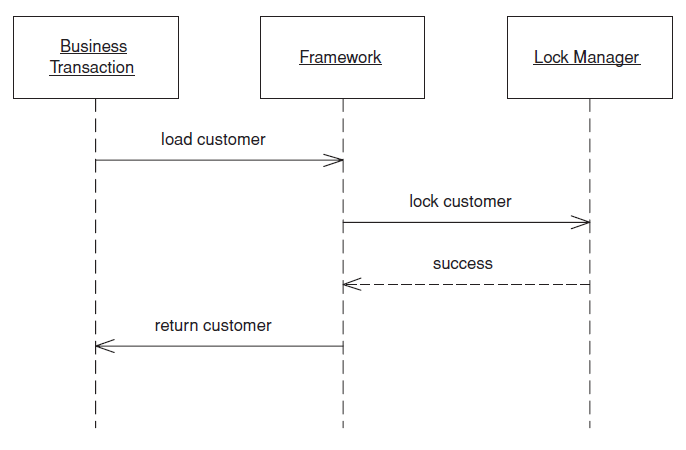
Session State Patterns
-
Client Session State
Stores session state on the client.
-
Server Session State
Keeps the session state on a server system in a serialized form.
-
Database Session State
Stores session data as committed data in the database.
Base Patterns
-
Gateway
An object that encapsulates access to an external system or resource.
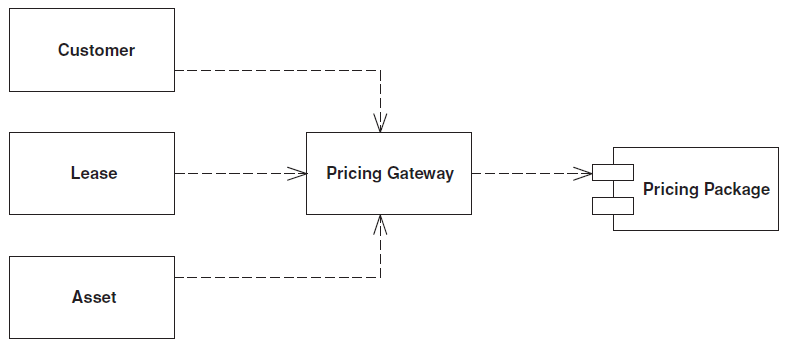
-
Mapper
An object that sets up a communication between two independent objects.
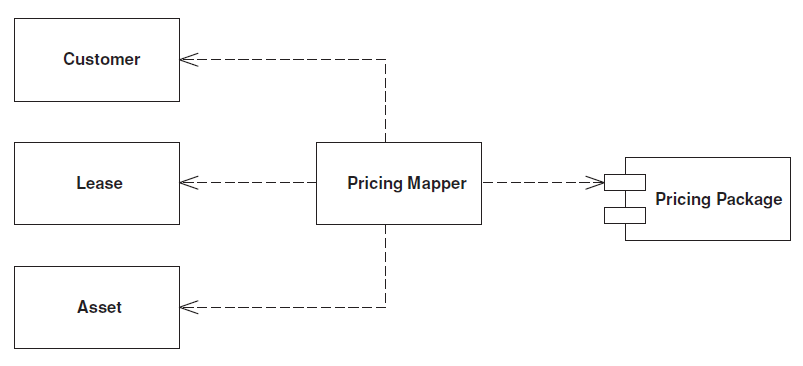
-
Layer Supertype
A type that acts as the supertype for all types in its layer.
-
Separated Interface
Defines an interface in a separate package from its implementation.
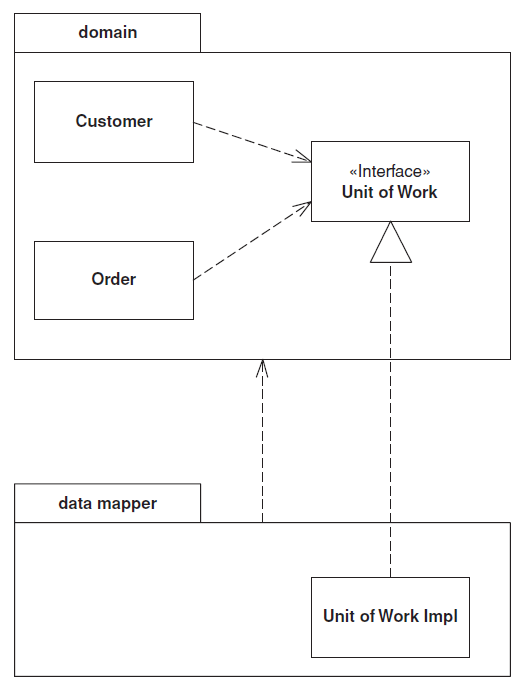
-
Registry
A well-known object that other objects can use to find common objects and services.
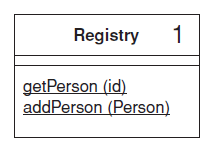
-
Value Object
A small simple object, like money or a date range, whose equality isn’t based on identity.
-
Money
Represents a monetary value.

-
Special Case
A subclass that provides special behavior for particular cases.
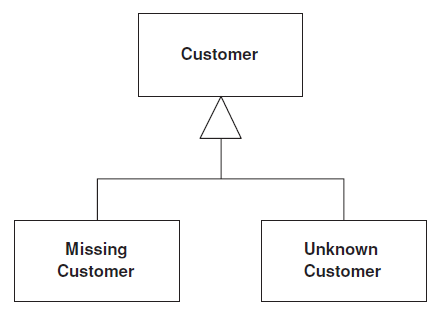
-
Plugin
Links classes during configuration rather than compilation.

-
Service Stub
Removes dependence upon problematic services during testing.
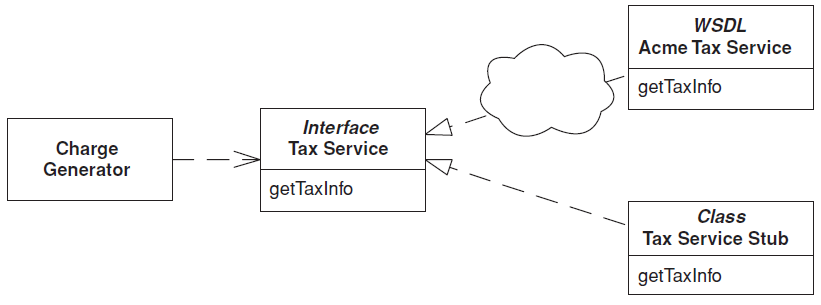
-
Record Set
An in-memory representation of tabular data.
